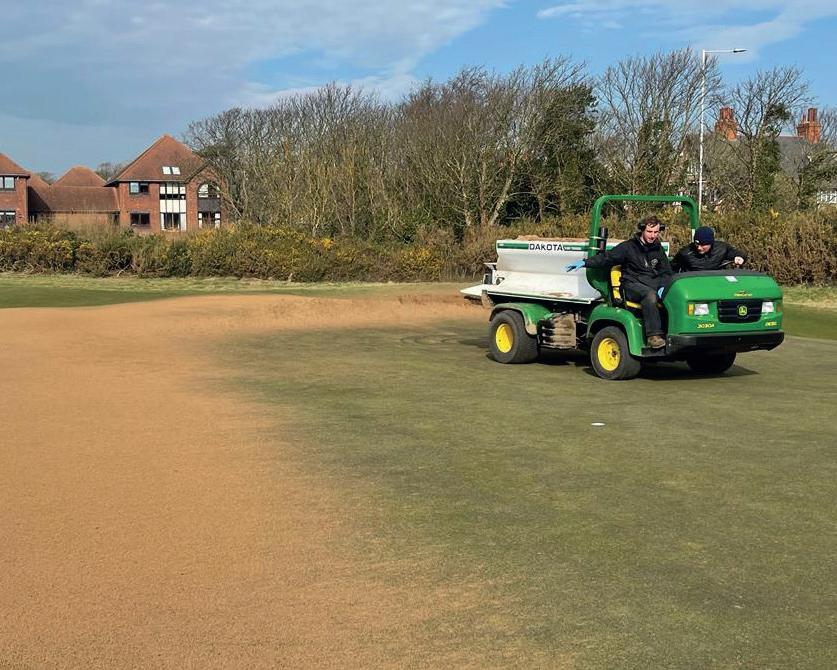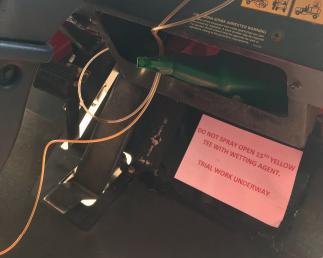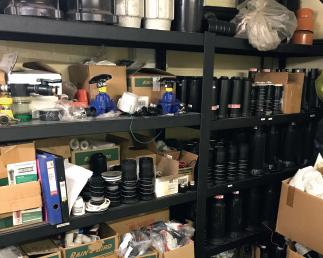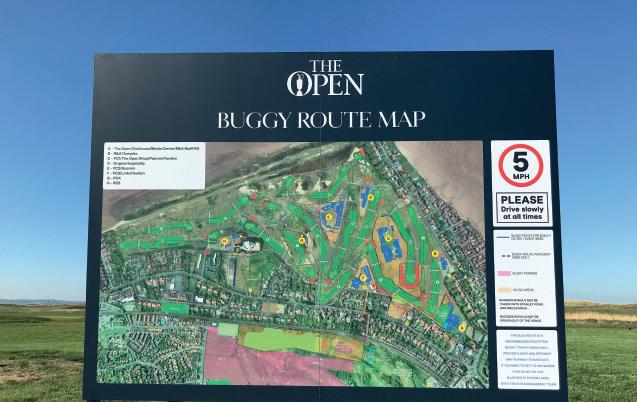
2 minute read
Hand watering is an additional water usage efficiency

Bunkers

The eighty-two bunkers all are constructed with revetted faces; fifty being remodelled by the team over this last winter. They are sprayed with total weedkiller, then routinely scorched with propane gas burners to keep them ‘clean’ and free from weeds and grasses. The sand (sourced from the course) is currently brushed up the faces with smooth rakes for the members, which helps the ball roll into raked centres. For the tournament, it is planned that the sides will be levelled, which will make the bases a little more punishing for the professionals.
ranges from daily, weekly, monthly, and usually quarterly programmes, and sometimes yearly, which all help everyone in the business understand where they are travelling. Bledge’s office walls are covered in a myriad of wallcharts (which he has dotted in strategic positions).
Bledge explains, “I have a magnetic board which I put my stickers on for everything I need to plan. I start my work schedules initially around the golf club diary - what is on, and what course set up is required on any given day. I then look at my staff rota to see who is on duty for the week. As any manager will tell you, the weather is crucial to everything, so I look on my weather app. and write that up on the board. Once those items are logged, I can begin to programme what we need to achieve agronomically, from cutting regimes to dressings and applications of products. Lastly, I input my personal diary which helps me make sure I know where I must be at any given time or day, whether that be attending the many club meetings or my husband/dad duties!” laughed Bledge. He is the first to admit that all this information is ‘old school’, but as he could testify ‘it works’. “I communicate to the team verbally in the morning or as the day progresses and then my deputy and/or senior greenkeepers pick up the baton with the team for the rest of the day.”
Machinery
Royal Liverpool’s capital expenditure programme for machinery replacement is on a rolling yearly basis. In this way, the club is not committed to any one manufacturer or fleet deal. “I can outright purchase annually what I need,” explained Bledge, “as it becomes available on the market. That way, we get the most up to date equipment as opposed to having to wait years for a finance deal to expire before we can start again. It works extremely well, and my fleet is always being refreshed with the best on offer regularly.” Bledge was rightly quick to praise his mechanic, Phil, who maintains this impressive armada of equipment, always keeping it in tip top condition.
Bledge runs a mixture of diesel, petrol, hybrid and all electric machines, and confesses that he would like more electric once he has developed the infrastructure to support an all-electric fleet. The maintenance facility has a mixture of red, green and yellow equipment, but stand out pieces are his Toro triplex all electric 3370s which he uses for greens, tees, surrounds and approaches. Interestingly, I asked about his ratio of using hand mowers and using triples on cutting greens, “We usually use triples 75% of the time but reduce the frequency leading up to events, favouring hand cutting. Leading into The Open, we will obviously drop out the triples and go 100% hand mowing with our all-electric Toro flex mowers.” Explained Bledge, “As we approach the event, we will increase some of our fleet numbers, as an example from six hand mowers to fourteen (we need six teams of two to cut each day, two being spare), fairway mowers from












